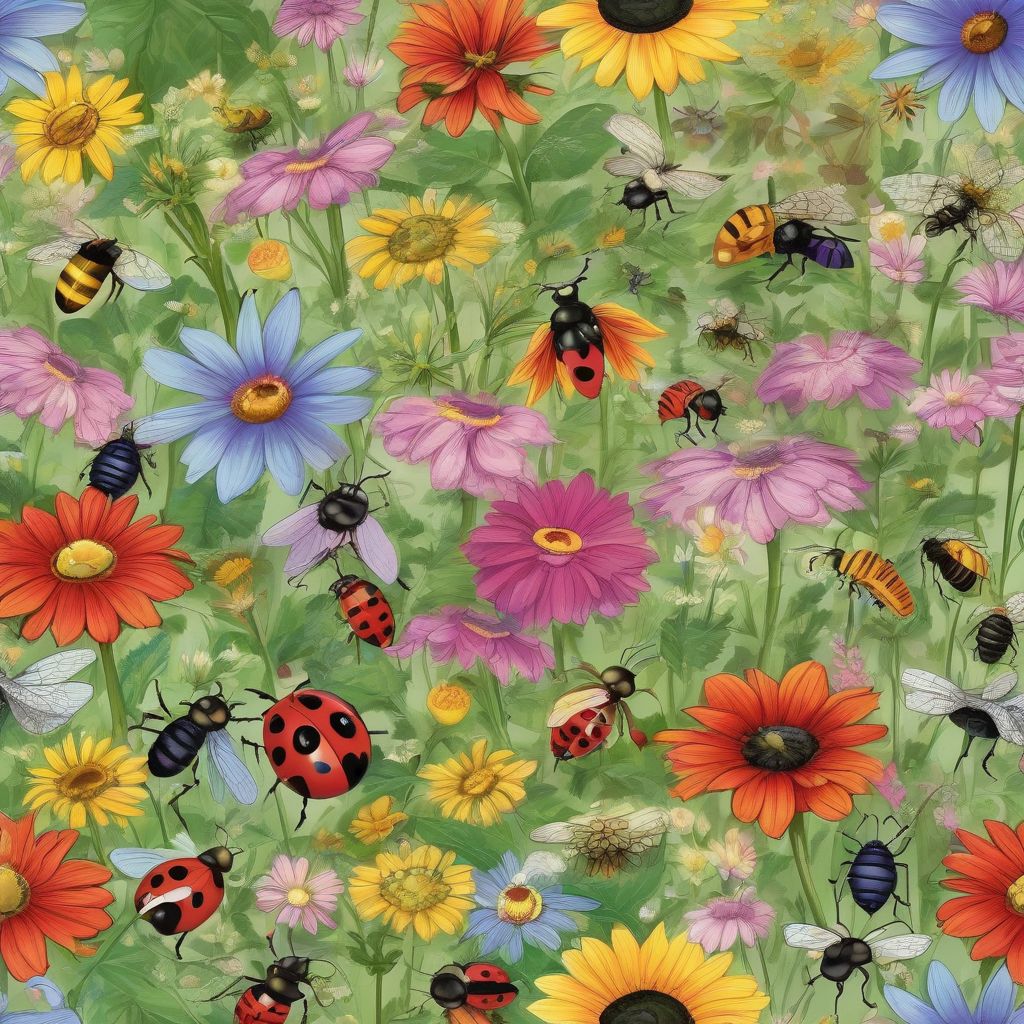Have you ever dreamt of a garden teeming with life, not just vibrant flowers and lush vegetables, but also a buzzing community of helpful insects working tirelessly to keep your plants healthy and thriving? Attracting beneficial insects to your garden is not just a pipe dream; it’s a smart, sustainable, and incredibly rewarding way to boost your garden’s health and productivity. Let’s explore how you can transform your garden into a haven for these tiny but mighty allies.
Understanding the Benefits of Beneficial Insects
Before we dive into the how-to, let’s talk about the “why.” Beneficial insects are essential for a healthy garden ecosystem. They contribute in several crucial ways:
Natural Pest Control
Many beneficial insects are predators, feeding on common garden pests like aphids, mites, whiteflies, and caterpillars. Ladybugs, for instance, are voracious aphid eaters, while lacewings and praying mantises devour a wide range of pests. By attracting these beneficial insects, you can naturally reduce pest populations, minimizing the need for harmful pesticides.
Pollination Power
While bees are the pollination superstars, many other beneficial insects, including butterflies, moths, hoverflies, and some beetles, contribute to pollination. These insects help fertilize your flowers and vegetables, leading to better fruit and seed production.
Soil Health Improvement
Some beneficial insects, like ground beetles and certain types of wasps, play a role in improving soil health. They help break down organic matter, aerate the soil, and control soil-dwelling pests.
Creating a Welcoming Habitat
Attracting beneficial insects involves creating a garden environment that provides them with food, shelter, and water. Here’s how to get started:
Plant a Diverse Range of Flowers
Beneficial insects are attracted to a variety of flowers, especially those with small, shallow blossoms that are easy to access. Focus on native plants, which are best adapted to your local climate and attract local insect populations. Consider planting a mix of annuals and perennials that bloom throughout the growing season to provide a continuous food source. Some excellent choices include:
- Dill: Attracts ladybugs, lacewings, and parasitic wasps.
- Fennel: A favorite of ladybugs and hoverflies.
- Yarrow: Draws ladybugs, lacewings, and parasitic wasps.
- Sunflower: Provides pollen and nectar for a variety of beneficial insects.
- Goldenrod: A late-season bloomer that supports pollinators when other food sources are scarce.
Provide Shelter and Nesting Sites
Beneficial insects need places to hide from predators, rest, and lay their eggs. You can create these spaces by:
- Leaving some areas of your garden undisturbed: Leaf litter, brush piles, and tall grasses provide excellent hiding spots.
- Building insect hotels: These structures offer nesting sites for solitary bees and other beneficial insects.
- Planting shrubs and trees: These provide shelter and nesting habitat for larger insects like praying mantises.
Offer a Water Source
Just like any other living creature, beneficial insects need water to survive. You can provide water by:
- Creating a shallow dish filled with pebbles and water: This allows insects to land and drink without drowning.
- Installing a bird bath with a shallow area: Birds and insects can share this water source.
- Maintaining consistently moist soil: This provides moisture for ground-dwelling insects.
Avoiding Harmful Practices
While creating a welcoming habitat is crucial, it’s equally important to avoid practices that can harm beneficial insects. These include:
Pesticide Use
Pesticides, even organic ones, can kill beneficial insects along with pests. Opt for natural pest control methods like companion planting (check out our article on The Best Companion Planting Methods for Pest Prevention) and introducing beneficial insects directly to your garden.
Excessive Tilling
Tilling can disrupt the soil and destroy the habitats of ground-dwelling insects. Minimize tilling or consider no-till gardening methods.
Removing all “weeds”
Many so-called weeds, like dandelion and clover, are actually valuable food sources for beneficial insects. Allow some of these plants to grow in designated areas of your garden.
 Attracting Beneficial Insects to Your Garden
Attracting Beneficial Insects to Your Garden
A Little Patience Goes a Long Way
Attracting beneficial insects takes time and patience. Don’t expect to see results overnight. As you create a more welcoming habitat and avoid harmful practices, you’ll gradually see an increase in beneficial insect activity in your garden.
“Patience is not simply the ability to wait – it’s how we behave while we’re waiting.” – Joyce Meyer. This quote perfectly encapsulates the approach to gardening for beneficial insects. As you nurture your garden, you’ll not only attract beneficial insects but also cultivate patience and a deeper appreciation for the interconnectedness of nature. For more tips on natural pest control, check out our guide on How to Control Aphids in Your Organic Garden Naturally, and for managing plant diseases, read The Best Organic Practices for Managing Garden Blight.
Conclusion
Attracting beneficial insects is a rewarding endeavor that benefits both your garden and the environment. By creating a welcoming habitat and avoiding harmful practices, you can transform your garden into a thriving ecosystem where beneficial insects and plants work together in harmony. Remember, a healthy garden is a diverse garden, buzzing with life and bursting with beauty. So, start building your insect haven today, and enjoy the fruits (and flowers!) of your labor. What are your favorite ways to attract beneficial insects to your garden? Share your tips and experiences in the comments below!



